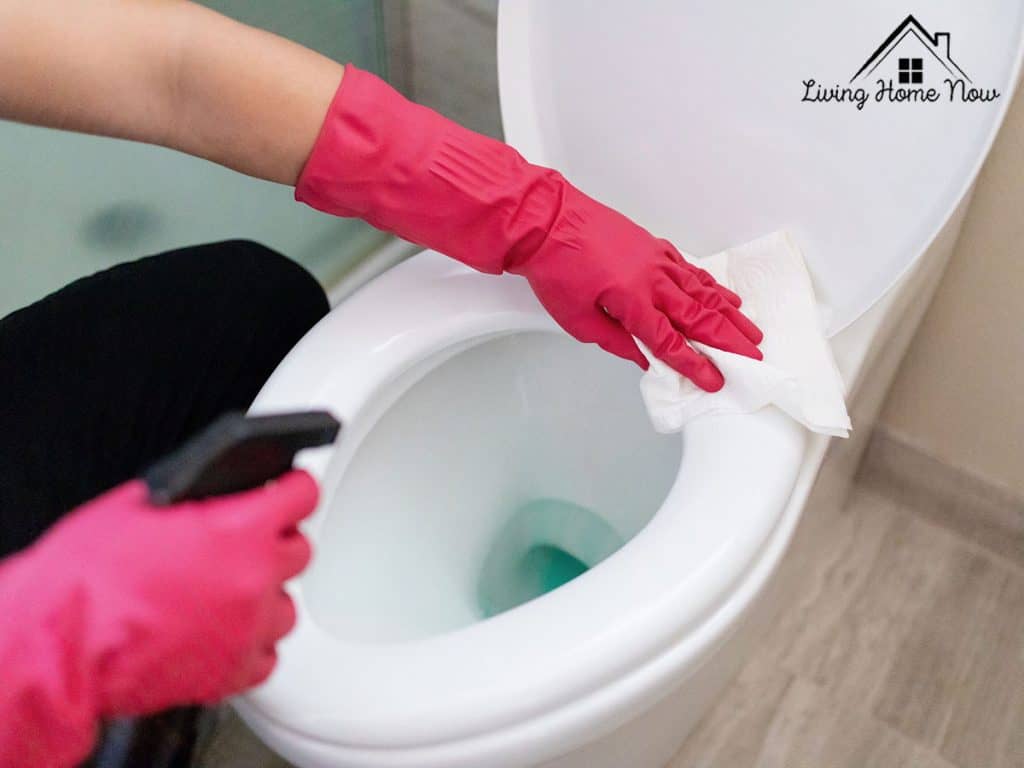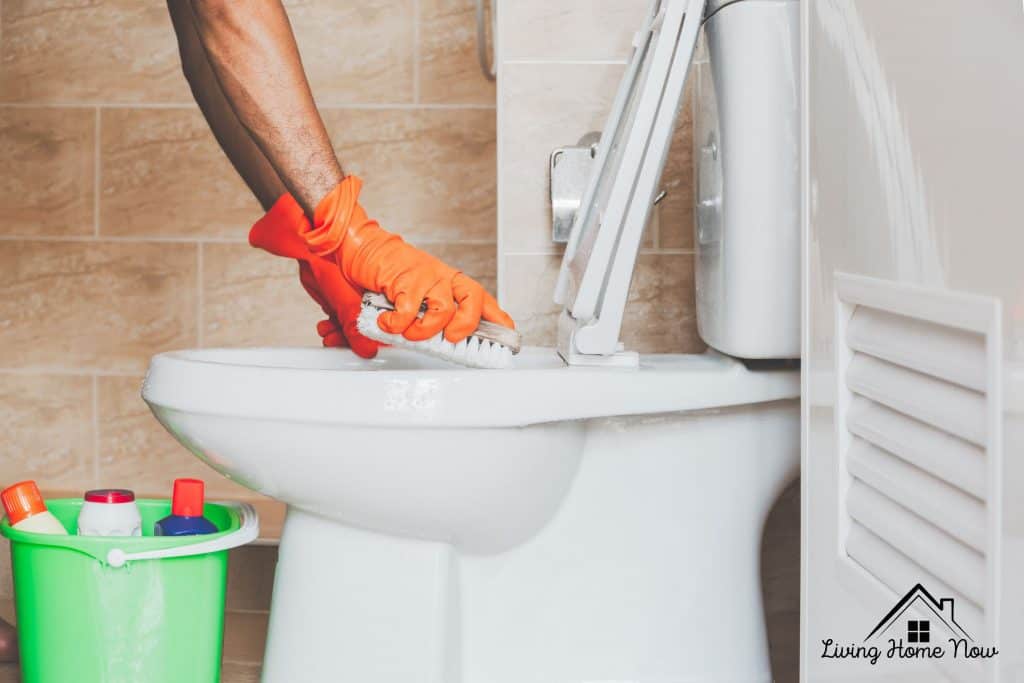The water we drink can sometimes be hard at home, depending on the region we live in. Some deposits sit known as limescale in toilets, sinks, and showers, making them unsightly in the long run. The process of removing encrusted limescale also becomes very difficult. As we will discuss, there are solutions. Read this article to learn how to remove limescale from showers and toilets in the best way.
Table of Contents
The bathroom scale is an infernal association
You can’t prevent walls from accumulating scale, no matter how good your filtration system is. There is a greater or lesser importance to this phenomenon based on the region because water does not occur the same way everywhere. There will be a lot more calcium in hard water. Despite the lack of miracle remedies, you can follow a few simple routines to avoid hours of scraping.
Remove limescale from the toilet in an efficient way
You are dealing with limestone that cannot be removed using normal maintenance products. If you have already built up a layer of limescale, don’t freak out; you can test the products sold in supermarkets, which might be more expensive than natural products, but you can find some success in removing them. Don’t hesitate to test pure, white-hot vinegar, and it may also be useful in certain cases. When limescale has already formed, this isn’t an effective anti-limescale product.
Generally, toilets should be descaled regularly.
To avoid accumulating a layer of thick, unsightly scale that can be impossible to remove, you should clean the bottom of the toilet regularly. Your later tasks will be easier if you do this now. Our toilets need frequent cleaning since limescale leaves a permanent deposit.
Rather than using chemical methods, you can place diluted white vinegar, baking soda, and lemon juice in your toilet once a week. Maintaining the cleanliness and odor of your toilet is easy; it is important to descale it regularly. In addition to this method, you can also use it to remove limescale from your shower.
What is the best way to clean a heavily scaled toilet?

Following a few simple steps makes it quite easy to descale a very scaled toilet. Using the Following a few simple steps makes it quite easy to descale a very scaled toilet. Using the screwdriver, you can remove the encrusted limescale from the accumulated toilet. In addition to damaging the enamel, you might injure yourself if you first drop the tool to the ground. If the toilet is handled badly, the mechanical action is the cheapest and the riskiest. There is a high likelihood of damage to the toilet.
How do I remove encrusted limescale from the toilet?
It is sometimes necessary to descale toilets with an acidic product, such as an anti-limescale cleaner. Proper hand and eye protection are used in small doses and usually work within 15 to 30 minutes. After using the toilet brush, it is imperative to ventilate the room and flush. Although it is not an eco-friendly method of removing limestone, there are no other natural means that would be as effective. By using this product, you can remove limescale effectively.
These solutions are too inefficient to use in such a situation. Use white vinegar, coca-cola, or baking soda instead.
Note: This product can slow down your septic system if you are not connected to the sewage system. Rather than flush the toilet at this point, drain the water and the anti-scale solution into a sink.
How do I clean a heavily scaled toilet bowl?

For descaling a toilet bowl, you can use the same product you would for cleaning the rest of your toilet. To remove the remaining residues of limestone cleaner and detached tartar after using a descaling product, use a household product. Do not forget to descale the rim of the toilet bowl as well!
Remove limestone regularly: it’s ecological!
Regular limescale removal is important to avoid expensive and environmentally unfriendly operations from toilets and sanitary facilities in general. When you use natural products to clean the toilets, you save money and time. If you are buying a house or returning to your vacation house, getting rid of limescale in the bathroom is not a problem if you use effective solutions. The same procedure is effective for bathroom sinks (showers, baths), as well as urinals.
Regarding descaling toilets, septic tank owners should avoid radical solutions. Maintaining the septic tank is easy with a tablet. In the absence of limestone, the tank will not smell bad and will not need to be emptied frequently.
Hydrochloric acid for toilets = danger
The use of hydrochloric acid should be done with extreme caution since it is highly corrosive. This product is effective at removing heavy scale buildup from toilets, but it can be hazardous. You may suffer severe skin burns and burns on your respiratory system. It requires the following equipment to work:
- gloves
- goggles
- a mask
- make sure the room is well ventilated
During the action of hydrochloric acid, it is not advisable to remain in the room. Cover all areas of the skin that are typically exposed (neck, arms, hair) to reduce the risk of injury in the event of projection or a fall of the container.
Descaling the toilet tank with hydrochloric acid?

If you use enough white vinegar in the tank overnight you will get just as good results as using hydrochloric acid.
If it’s the only product available for descaling toilets, it’s the most effective. However, it is rare for it to be the only choice.
Removing limescale in the bathroom
When you have glass walls in your bathroom, limescale will become evident quickly, as it usually arrives through the showerhead.
How do I remove embedded limescale from a bathroom window?
First of all, make sure to remove water from the glass with a shower squeegee after every shower. When you do this, 90% of the work to limit the traces of lime on glass is done. In the meantime, the glass will only have to be washed with an anti-limescale product once a week to dissolve what has remained on it. Whenever you take a shower, rinse the walls well to prevent soap and shampoo from drying on them.
Limescale-covered shower wall
The glass wall of the shower is gradually covered in ugly white streaks. Getting rid of them is difficult. You can use a product that will prevent scale from forming on the walls. It can be fitted with a paper towel between the product and it if the product works moderately.
It will absorb the product for longer and stop it from dripping. It is effective when left to sit for 20 to 30 minutes, then wiped down with these stuck sheets to finish the job with a small mechanical cleaning on top of the chemical treatment. You may need to repeat the operation if the scale is still visible on the wall. Then finish with a scraper after rinsing well with clear water.
Limescale removal from a shower surface
If the shower has any other surfaces, whether tile, mosaic or ceramic, the usual products you use are sufficient. It doesn’t matter whether you make your cleaners or you purchase commercial products. Limescale is prevented from sticking and becoming too strong by frequent cleaning.
Tip: After each use, rinse the shower well to facilitate cleaning afterward.
How do I remove limescale from plastic products that are used in shower ?
Limescale can be removed from plastic with the same products. Acidic products are not harmful to plastic, and many anti-limescale products are packaged using plastic.
Descaling of the faucet from limescale
Faucets in the bathroom are often victims of scale buildup. Read this complete article to know how to descale your faucet without disassembling it!